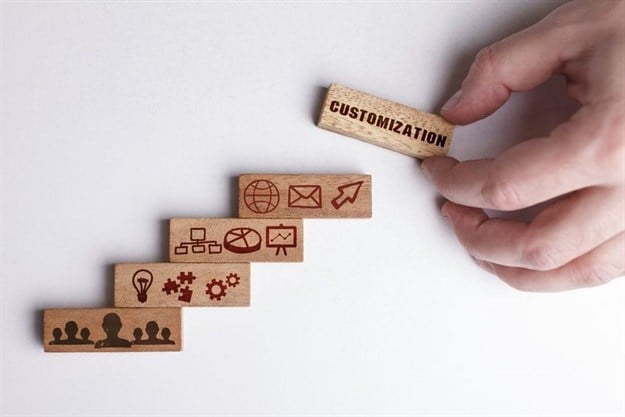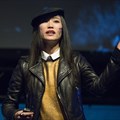#BizTrends2018: Down with 'short-termism', more focus on customisation

The first thing that I think is important is the trend we’ve been seeing towards increasing customisation of messages to customers. While the logic of trying to find a specific way to connect with each person is seductive, I worry that we are moving away from the fundamental driver for brands. For the longest time, a brand has been predicated on the notion of meaning one thing to a large group of people, that the logo or colours or iconography represent a particular promise that that brand delivers to its customers.
I fear that in an age where digital media allows us to communicate with an audience of one, the temptation to stretch a brand’s equity to fit that particular person is a potentially dangerous path.
I feel that this has meant that many people and brands we engage with seem to have adopted the notion that the best way to cope with the fluid and uncertain waters around us is to take a far more short-term approach to things.History tells us that short-term thinking will, over time, erode quality and consistency, which will in turn hurt brand equity.
No speculation about the future would be complete without a view on the digital advertising landscape. I’m confident we’ll continue to see significant growth of digital adspend in South Africa despite the tougher climate. Or maybe even because of it. As a result, I suspect that we’re going to see a maturing of approach to digital advertising over the next year or so.
Only five or six years ago, I was working with large advertisers who approached digital media investment on the basis of a target spend number, rather than trying to work out what was relevant to the task at hand, where to engage most effectively with customers and how to utilise these powerful new tools to their maximum potential.
I get the sense that a euphoric headlong rush into digital investment (oftentimes mandated because this was how things were happening in Europe or the US) will be tempered now, and mapped more carefully.This is a great thing for the sector as more application of thought and intelligence into the deployment of budgets should yield better results.
This improvement in rigour and approach to digital advertising will also be led by better data management. Companies like Pick n Pay are becoming very sophisticated with their loyalty programmes. The Smart Shopper programme is a fantastic example of data-driven communication and insight. And although it might be a bit trite, data really matters.
I was recently in a presentation given by one of Kantar’s top global minds, where I learned that four out of 10 South Africans believe that they’ve seen a piece of online communication or advertising that is relevant to them in the past year, with a further four saying they have seen an online ad that was irrelevant to them. The remaining two out of 10 haven’t seen any online ads that they can recall. This sounds like a coin toss to me in terms of whether advertisers are wasting money on irrelevant impressions. What gave me comfort is that in a very sophisticated digital advertising market like Australia, only one in 10 people report seeing a relevant piece of online communication. And seven out of 10 say they haven’t – these figures are staggering in terms of wasted advertising investment.
What strikes me about these statistics is that the problem is unlikely to be the algorithms driving ad placement, but rather a problem with target audience data and insights. So hopefully a more rigorous approach in the deployment of investment will help solve this in 2018. By way of example, we recently took onboard a new client in our Bionic business, where we were able to generate more new customers for a client in one month on the Facebook platform than they had generated from Facebook in the entire nine months preceding this, combined. This was achieved largely through good discipline and understanding of the customer, backed by a brilliant algorithm.
The more things change, the more they stay the same
In 2018 I’m hoping for more macro-economic stabilisation; less disruption in terms of account moves; more innovation in the OOH space with regards to interactivity, scheduling and utilising beacon technology; image recognition; and seeing much more of those things that will create more data. I also think that we’re going to see some very serious strides in the connection between digital advertising and real-world purchasing in physical stores.
I am also convinced that we will finally start to see a decrease of data costs in South Africa, which will fuel growth in over-the-top technologies, amongst other things. This in turn brings more competition to the television landscape and a whole new set of rules and viewer behaviour to get our heads around. I think it would be amazing to see a telecoms business bringing pre-bundled bandwidth to market to support content strategies – Cell C’s recent announcement around Black hints in this direction.
I guess it’s probably good to bear in mind though that the more things change, the more they stay the same. In the end, great content will always attract audiences – it’s just the method of delivery that’s changing. As the first serious example of this, consider the dramatic decline of readership in print vehicles. It may be severe, but then look at the growth of those brands online.
I hope that in the coming year, we start to see the global regulatory environment try and deal with fake news – it is an incredibly destructive force. Sadly, it’s not even new news, so to speak. Things are easier to deal with if you can label them, so perhaps now that these sort of tactics have a name, we’ll see an acceleration of some sort of action from reputable publishers, governments and media platforms that amplify content to protect the integrity of our news.
Overall, I feel quite invigorated by the year ahead. If you enjoy change, learning and new frontiers, then I think 2018 is a year to watch. Opportunity is always present during flux and we have the privilege of being in a front-running industry in terms of disruption. Onwards and upwards as they say.




































